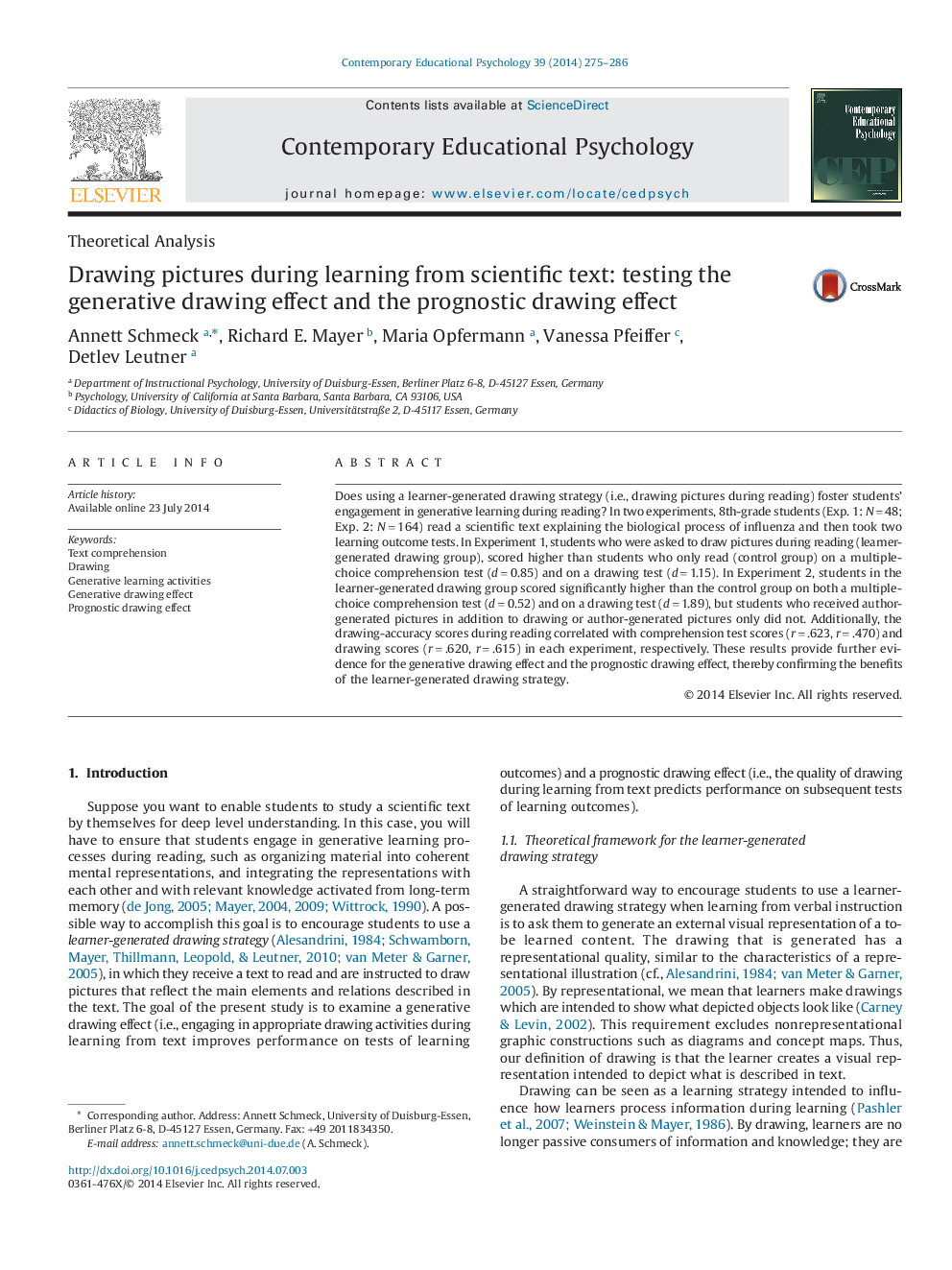| کد مقاله | کد نشریه | سال انتشار | مقاله انگلیسی | نسخه تمام متن |
|---|---|---|---|---|
| 352644 | 618607 | 2014 | 12 صفحه PDF | دانلود رایگان |
• In two experiments the effectiveness of learner-generated drawings was tested.
• Results confirm both the generative and the prognostic drawing effect.
• Engaging in appropriate drawing activities during learning improves performance.
• The quality of drawing during learning from text predicts performance.
• In general, results confirm the benefits of the learner-generated drawing strategy.
Does using a learner-generated drawing strategy (i.e., drawing pictures during reading) foster students' engagement in generative learning during reading? In two experiments, 8th-grade students (Exp. 1: N = 48; Exp. 2: N = 164) read a scientific text explaining the biological process of influenza and then took two learning outcome tests. In Experiment 1, students who were asked to draw pictures during reading (learner-generated drawing group), scored higher than students who only read (control group) on a multiple-choice comprehension test (d = 0.85) and on a drawing test (d = 1.15). In Experiment 2, students in the learner-generated drawing group scored significantly higher than the control group on both a multiple-choice comprehension test (d = 0.52) and on a drawing test (d = 1.89), but students who received author-generated pictures in addition to drawing or author-generated pictures only did not. Additionally, the drawing-accuracy scores during reading correlated with comprehension test scores (r = .623, r = .470) and drawing scores (r = .620, r = .615) in each experiment, respectively. These results provide further evidence for the generative drawing effect and the prognostic drawing effect, thereby confirming the benefits of the learner-generated drawing strategy.
Journal: Contemporary Educational Psychology - Volume 39, Issue 4, October 2014, Pages 275–286
